Terry Larson enters his underground garage in Mesa, Arizona, with the distracted air of someone accustomed to the remarkable. And once again, he is showing off an amazing discovery.
In his sprawling restoration shop, which has seen so many Jaguar and SS sports and racing cars brought back to life, there stands a crusty relic that must rate among the top echelon of all “barn finds.”
The low-slung form is that of a 1938 SS-100, a rare piece of Jaguar pre-war history that had been hidden away in a New Jersey storage shed for the past 60 years. And not only was it parked in 1958 and then largely forgotten, essentially no one in the global Jaguar community of owners and enthusiasts even knew it existed.

1938 Jaguar SS-100
“It’s pretty interesting,” Larson said in a classic understatement. “You don’t run across cars very often that have been sitting for 60 years that were unknown.”
He acquired the car from the son of a man who purchased it in 1958 from someone, possibly a U.S. serviceman, who had brought it over from England.
“A lot of these cars were brought to America by service people when they finished their duty in England and came back to the States,” Larson noted. “These (cars) were quite cheap and the dollar was very strong, so they could make some money. I think that’s what happened here.”
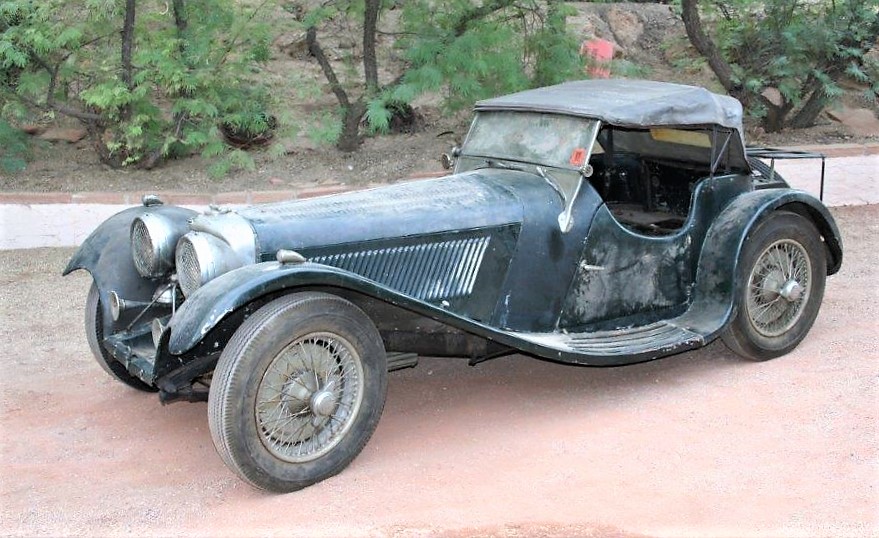
1938 Jaguar SS-100
But what happened next is both strange and perplexing. The son, who said he was 10 years old in 1958, explained to Larson how the car wound up being squirreled away.
“He went with his father when he bought it,” the restorer said he was told. “It was icy that day, and he said his dad went off the road and almost hit somebody’s house. But he made it home, got it in the shed, and his plan was to do a restoration on it.”
But while the new owner made a few steps toward restoring the car, he never got very far with it and apparently lost interest. After driving it into the shed that first time, he never drove it out again.
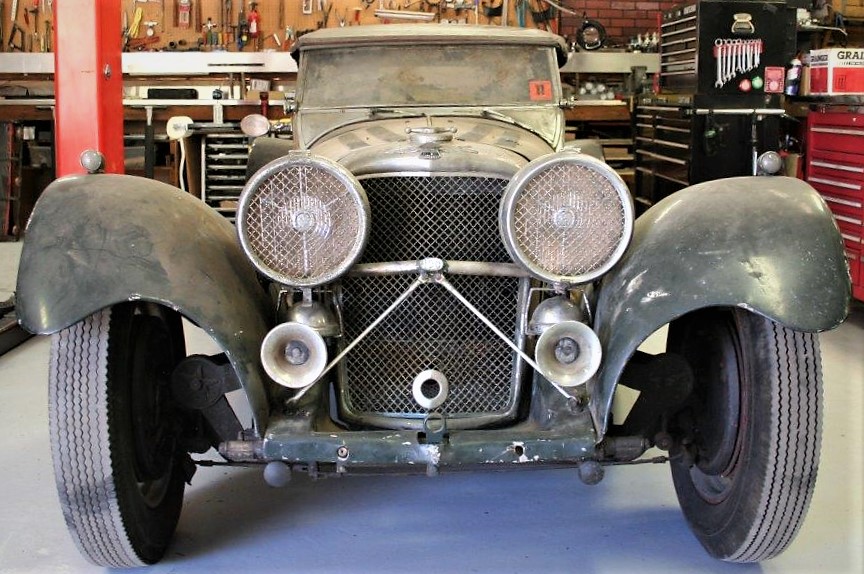
1938 Jaguar SS-100
“He only drove it home,” Larson said. “That’s what I asked his son: ‘You mean when your dad drove it home, that was the last time he drove it?’ And he said, ‘Yeah that was it, and then it just sat. From that point on it just sat’.”
The dad was not a typical car guy with a circle of friends who might have known about the car, he added, so when it went in the shed, it was pretty much out of sight and out of mind.
Larson learned about the existence of the unknown SS-100, chassis 39049, because of his reputation in the Jaguar community. He is known as a leading expert, restorer, historian and archivist with unparalleled dedication to Jaguar and SS sports and competition cars.
“A friend of mine has a Jaguar repair shop and he heard about it,” he said. “He’s the one who contacted me. I told him where the numbers were on the chassis and so forth, and he took photos and sent them to me.”
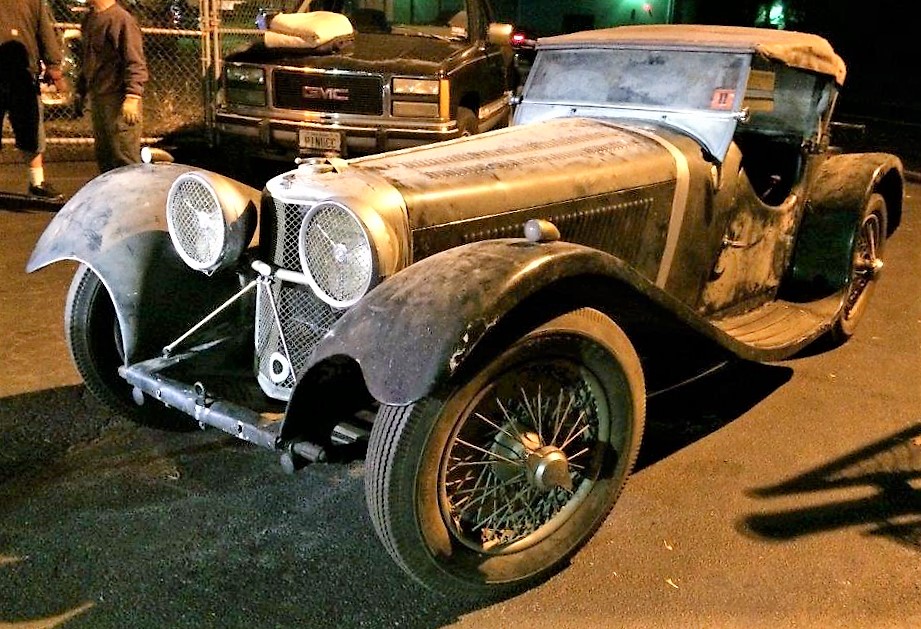
1938 Jaguar SS-100
Larson also has a reputation as being something of a sleuth, the Indiana Jones of Jaguar archeology who has been involved with a number of astounding discoveries of historic cars. Among them, his restoration of the first SS sports car prototype, the SS-90 built in 1934, which took as much detective work as technical know-how in restoring the unique two-seater back to its original form.
Then there was the finding of the “missing” Jaguar E-type lightweight, the only one unaccounted for out of the scant number produced. Through sources and research, Larson found the alloy coupe buried under household debris in a small, Los Angeles-area garage, and in wonderfully patinaed “barn-find” condition.
He has achieved any number of other successes, from discovering a long-lost C-type hidden under a custom fiberglass body to settling some disputes about authenticity (there were once three C-types claiming the same chassis number).
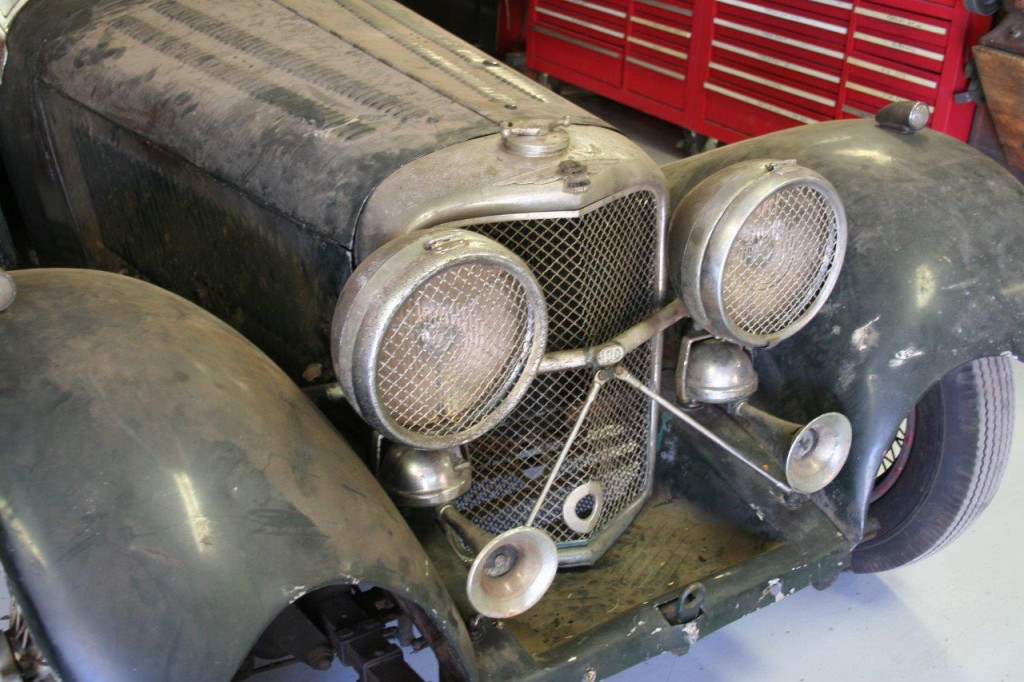
1938 Jaguar SS-100
Larson is the keeper of the register in the heady world of C-type, D-type and lightweight E-type race cars of the 1950s and ’60s, as well as keeping track of the sports cars produced before World War II by Jaguar’s predecessor, SS – the automaker changed its name to Jaguar because of the letters’ subsequent association with the Nazis.
His familiarity with SS-100s around the world is why Larson knew how uncommon this find was.
“I’m the registrar for the SS-100s for the Classic Jaguar Club,” he noted. “It’s never been listed in the CJA register, and I keep in touch with people from all over the world, people in England, Germany, Australia, people who keep track of these cars, and none of them knew that this car existed.
“It could have been destroyed or scrapped, we just didn’t know.”
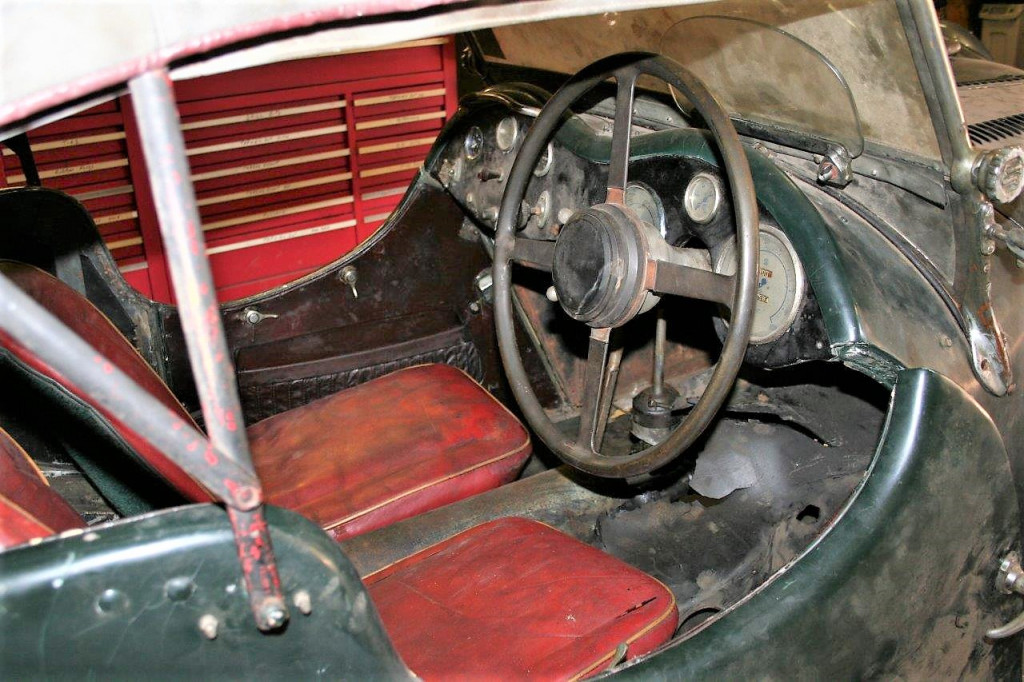
1938 Jaguar SS-100
This SS-100, which wears the automaker’s first use of the ‘Jaguar’ name, is a special one with racing history and some unique features that provide clues to its life before being brought to the U.S., Larson said. The roadster has exterior handles on its doors, not usually found on these cars, and an alteration that allows the driver to move the seat further back.
These features probably mean the car once competed in rallies during which the door handles and seat placement would provide an advantage at checkpoints, where the driver or navigator would have to quickly exit and re-enter. That would be especially advantageous during bad weather when the removable side curtains would be in place.
A tireless researcher, Larson has in his possession photos of the car when it was raced at the Chrystal Palace in England in 1939 with its broad fenders removed. The setup of the single central “owl’s eye” taillamp mounted on the spare tire and the shortened chrome trim on the running boards could signify that the owner had the factory configure the car for easy removal of the fenders.
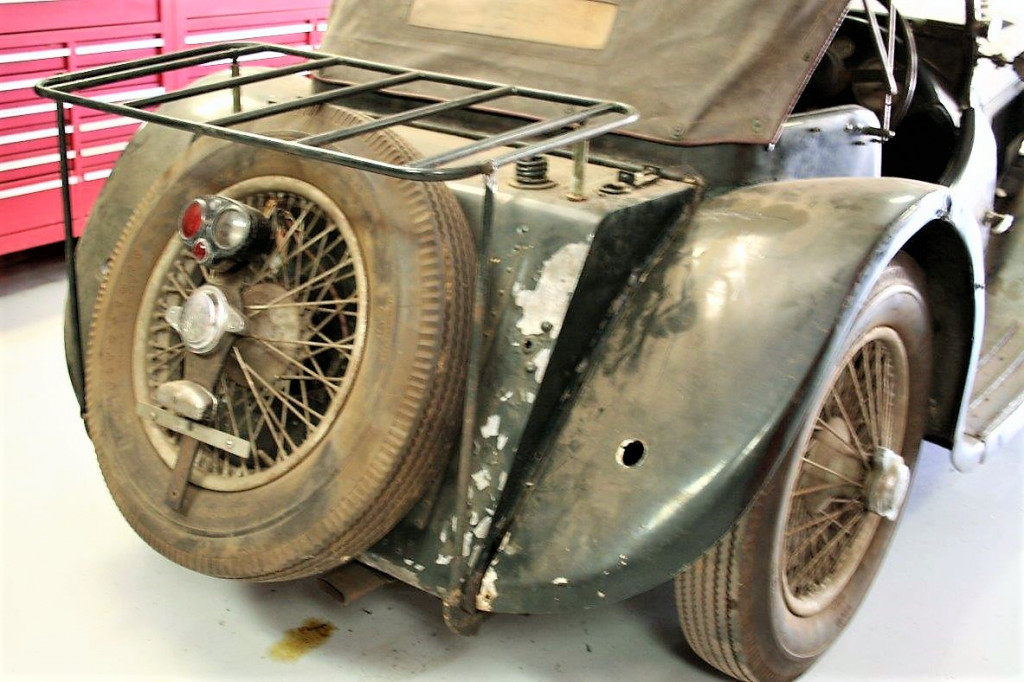
1938 Jaguar SS-100
Larson has another set of photos of the car apparently taken just after the war that shows it at the Jaguar factory, probably in for service, with the exact setup as it has now.
“That’s something unique about this car, the owl’s eye lamp mounted off the spare,” he pointed out. “When I first saw photos of that, I thought it was incorrect and somebody had that done. But when you see the photos at the factory, you can see that’s where it was.
“I think since they were pulling the wings (fenders) off to race, they probably felt it made sense to mount the owl’s eye lamp there. It could have been done at the factory, it’s hard to say. But it was obviously done real early.”
Another thing shown in the early photos is a simple but well-designed luggage rack that’s still on the car.

1938 Jaguar SS-100
As a later version of the SS-100, the car has the desirable 3.5-liter overhead-valve engine, which apparently has never been completely apart. Just 115 of the 3.5-liter cars were produced.
Also under its hood (or in the U.K., the bonnet) can be found the original brass fuel pumps, unusual because during the war, there was a brass shortage and such things were often melted down for the war effort. The upper radiator hose and clamps also look like original equipment.
All the numbers match on the car, Larson added, with the correct engine and other parts. The car was repainted – the color changed from gray to dark green – and some trim work done sometime early on, but the car still retains a wealth of originality and lovely patina. The seats were apparently recovered at some point, although after 60 years in storage, they’re pretty well shot.

1938 Jaguar SS-100
Among Larson’s own collection of vintage Jaguar sports and racing cars, including some specials, he has another 1938 SS-100 in restored condition that he had owned for many years and has used for rallies and other events. With the two cars sitting side-to-side, it’s easy to see the small differences of the latest acquisition.
So what happens now? Larson said he has restored a number of SS-100s over the years, as well as the SS-90, but this is the first time he has owned a car that is in such rare survivor condition.
Rather than restore it to original, he plans to do a sympathetic refurbishment that will put it back on the road but still leave it in “as-found” condition. The body and chassis are in good shape with no structural rust, and with only minor cosmetic damage, so it should be possible to bring the car back to life while retaining the story it has to tell.

1938 Jaguar SS-100
“I’ve always loved the 100s, and I’ve restored a lot of them,” he said. “This would be an easy car to restore, but I don’t want to restore it. I think the world is ready for something like this.
“I have a vision of what I want to do. My plan is to make it a running and driving car, get all the electricals working, but leave it very patinaed. We will either leave the paint as is or do a few spots and blend it in.
“One of the things we will have to do is rebuild the (wire-spoke) wheels and put new tires on it. When we paint the wheels, we will try and make them look old.”
Pointing out the filigree pattern on the tarnished radiator shell, Larson said, “Look at the chrome, how it’s patinaed. I’m gonna leave that. I’m not going to re-chrome it.
“We’ve restored about nine of these, plus the SS-90 prototype, but we’ve never taken one and done this. It will be a whole new experience. I kind of feel like I’m going full circle.”
This article, written by Bob Golfen, was originally published on ClassicCars.com, an editorial partner of Motor Authority.